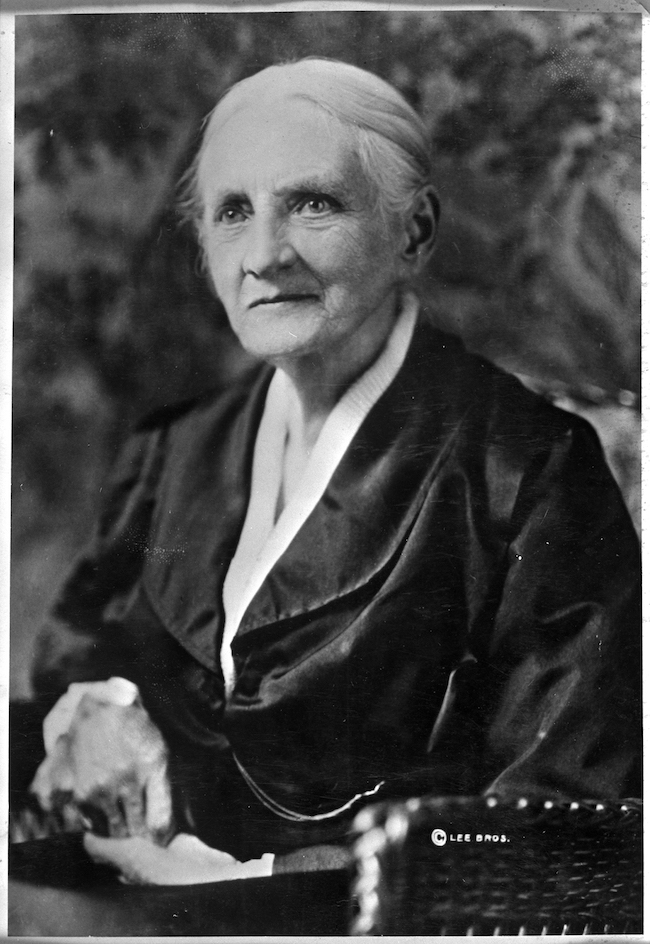In Feb. 14, 1913, students at the University of Minnesota sent their English teacher, Maria Sanford, a Valentine calling her “the best-loved woman of the North Star State.”
Though she’d retired from teaching three years earlier, her students remained devoted to her.
Maria Sanford was born in 1836 in Saybrook, Connecticut, where she attended school and got her start in teaching. Sanford was one of the first female professors in the country when she took a position teaching history at Swarthmore College in 1869.
In 1880, at age 43, she joined the University of Minnesota as a professor of rhetoric and elocution. Sanford taught at the U of M for nearly 30 years, retiring in 1909 at age 73. During that time, she championed religious, civic and social issues, especially ones that supported women’s education.
But it was her teaching that set her apart. Her philosophy was that education could not only transform the individual, but also cure social ills — so it was her responsibility to shape the students’ character as well as their knowledge. She provided lively lectures that often included slideshows and impromptu poetry recitations.
Her classes were always full. Outside of the classroom, she frequently worked with students in the evenings and opened her home, housing students and hosting parties for them.
Throughout her university career, Sanford also gave public lectures on composition, history, teaching and social issues, earning an additional salary along the way, and occasional criticism from colleagues and students about spreading herself too thin.
Still, she took on more and more challenges, carrying a full teaching load, holding classes during summer and expanding her lecture circuit. She also oversaw the debate program at the U of M. Criticism soon gave way to increased admiration for her teaching. In 1899, she placed third in a favorite-teacher contest held by the Minneapolis Journal, but her students were so upset she didn’t win the grand prize that they raised the money to give her the winning prize anyway, a trip to Europe.
Criticism returned, however. Sanford frequently charged students for instruction outside of class and for class materials, which led to calls for her termination from the U of M.
But again overwhelming support from students and civic leaders — many of whom she met while touring the state giving lectures — prevented the action, though for a while her university salary was cut.
By the time she retired in 1909, all had been forgiven by the university. In her honor, the regents named her professor emeritus of rhetoric.
Even in retirement, Sanford remained active in her lecture circuit, expanding her area of coverage nationwide and using her lectures as a fund-raising platform for religious and social causes.
She also adopted the call for women’s suffrage, though she considered voting a privilege rather than a right. She gave patriotic lectures during World War I, well into her 80s. She died in her sleep on April 21, 1920, in Washington, D.C., after giving a lecture to the Daughters of the American Revolution.
Sanford has been honored across the state. In 1910, the University of Minnesota named its first female student dormitory Sanford Hall, and several schools in the state are named for her.
In 1958, Sanford was chosen to be one of two Minnesotans represented in Statuary Hall, a chamber in the U.S. Capitol devoted to prominent Americans.
Her statue bears a similar inscription to her 1913 Valentine (pictured), “best-known and best-loved woman in Minnesota.”
‘Full of vim, an occasional whim’
Students gave Maria Sanford a special Valentine on Feb. 14, 1913. Photo courtesy of the Minnesota Historical Society
Learn more
Want to know more about Minnesota women’s history? Be on the lookout for a new exhibit at the Minnesota History Center on the 100th anniversary of women gaining the right to vote, set to open fall 2020. Learn more about the Minnesota Historical Society’s current exhibits at mnhs.org.
Jessica Kohen is the media relations manager for the Minnesota Historical Society.


